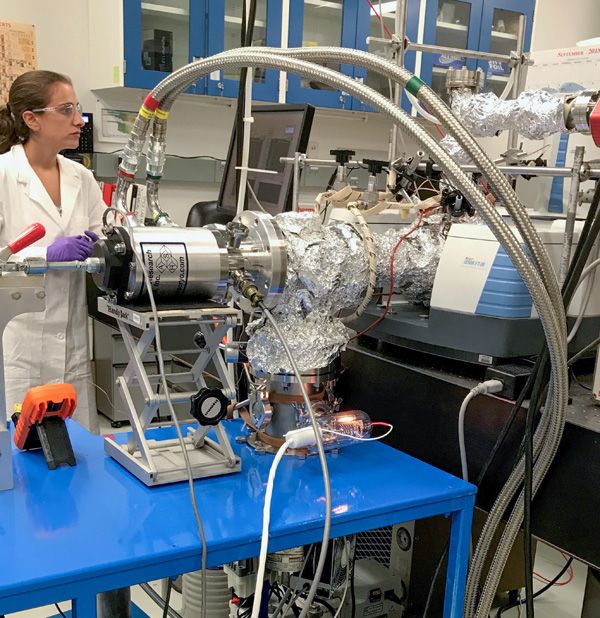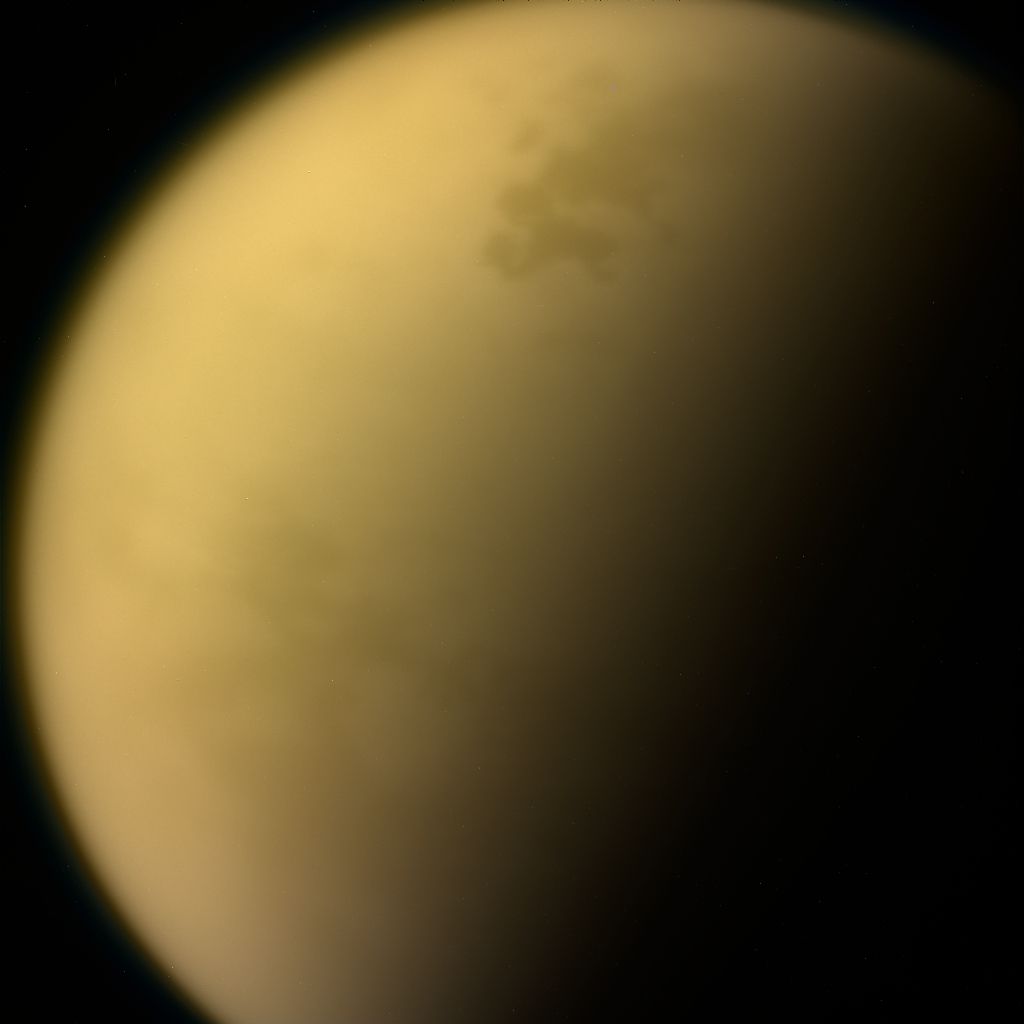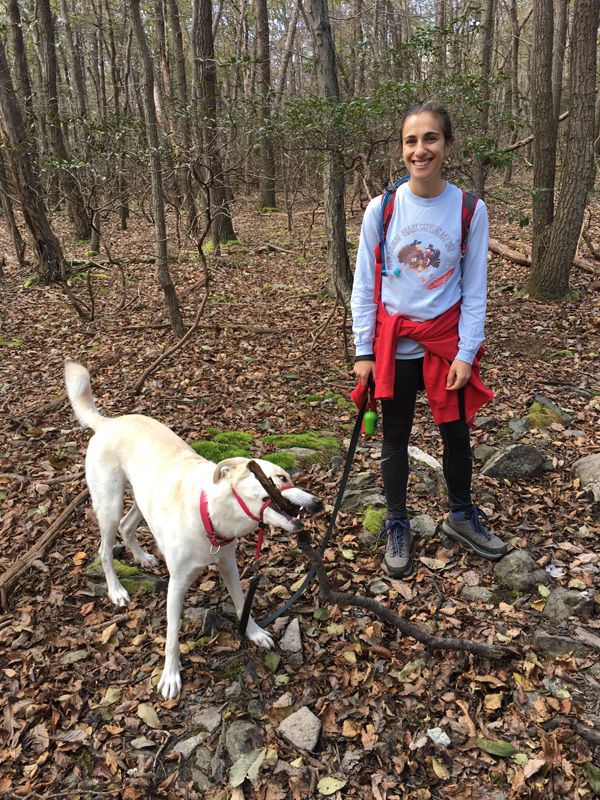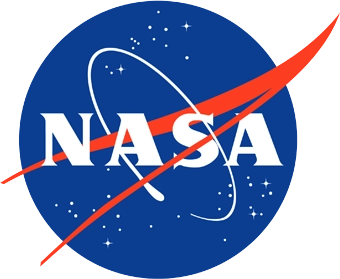Early Career Scientist Spotlight
Dr. Melissa Ugelow
Atmospheric Chemist
Planetary Systems Laboratory
What is your research focus?
My research is primarily focused on Titan’s stratospheric ice clouds. Titan has a very chemically complex cloud system, with methane and ethane convective clouds in the troposphere (the atmospheric layer right above the surface) and then numerous hydrocarbon and nitrile ice clouds in the stratosphere (the atmospheric layer above the troposphere). Over the past decade, from Cassini’s Composite Infrared Spectrometer (CIRS), my postdoc adviser Carrie Anderson discovered that most of the ice clouds in the stratosphere are not chemically pure but are actually co-condensed ices. So, rather than having one chemical compound reaching saturation and condensing to form an ice cloud, in Titan’s stratosphere, the vapors of two or more compounds simultaneously reach saturation and condense out together and form a co-condensed ice. For these clouds then, the ice particles are chemically mixed within the cloud.
The interesting thing about these clouds is that their low energy infrared (IR) spectral features down by the bulk structure vibrations (in the Far-IR) are not what we would expect based on the individual pure compounds that compose them. Instead, these co-condensed ices have unique features in the Far-IR spectral region that vary based on the ice mixing ratio that must be determined experimentally. And this is where I come in. I perform laboratory transmission IR spectroscopy on both pure and co-condensed nitrile and hydrocarbon ices in a high vacuum ice chamber to quantify the chemical identification of Titan’s CIRS-observed co-condensed stratospheric ice clouds.
What inspired you to pursue a career in planetary sciences?
When I went to graduate school, my plan was to study Earth’s atmospheric chemistry. I was accepted into the analytical/atmospheric chemistry program within the chemistry department, where most of the graduate and faculty research was focused on Earth’s climate. When I met with the professor that I wanted to do my thesis work with, she told me that she only had funding for a student to study the atmosphere of Titan (one of Saturn’s moons). The plan was that I would start on this Titan project, and then switch to an Earth climate project once either she or I got funding for an Earth-focused project. However, once I got started learning more about Titan and doing the research, I fell in love and never thought twice about switching to an Earth-focused project.
What really solidified my decision to continue in planetary science after graduate school was an internship at NASA Goddard Space Flight Center that I had towards the end of my time at graduate school. Seeing how scientists were involved in planetary flight missions at all different levels – from instrument and technology maturation, to instrument calibration and testing, to data analysis – really inspired me to continue down this path.

Credit: Dr. Carrie Anderson
Did you always know that you wanted to be a scientist?
I knew that I wanted to be a scientist, specifically a chemist, after I took chemistry in high school. Between my sophomore year chemistry teacher and my senior year AP chemistry teacher, I was pretty sold on chemistry. It wasn’t until later in graduate school that I really knew what kind of research I wanted to do, but since high school I knew that I wanted to be a scientist.
Tell us about one project that has been particularly impactful in your field.
While this result is not finalized or published yet, the most impactful project that I have worked on is my current project where I am determining the chemical composition of the first co-condensed ice cloud that was observed in Titan’s stratosphere (Anderson and Samuelson, 2011). We are very close to the chemical composition, being a few more experiments away. This is impactful because these types of clouds have a profound influence on Titan’s thermal structure, especially in the winter polar latitudes. Determining the chemical composition of the Titan’s co-condensed ice clouds and then calculating these ices’ optical constants will be very useful for modelers and observers studying the radiative properties of Titan’s atmosphere.
What scientific fact consistently amazes you?
Something that amazes me is the diversity in the outer solar system moons. While many outer solar system moons are ocean worlds with subsurface liquid water, the chemistry that occurs on and within these bodies based on their distances from their planet (and the other moons in that planetary system) is just fascinating to me!
What do you like to do in your free time?
My main hobbies include running, hiking, and reading. I used to be a cross country runner in college, and so I am trying to get back into distance running again. Also, since the beginning of COVID-19 and being at home all the time, I have started container gardening and now also have a large collection of indoor plants, both of which have been a fun way to pass time!
What are your future research interests and goals?
While I currently study ice clouds, in graduate school, I studied organic aerosol in planetary atmospheres. Since aerosol can act as condensation nuclei, I am very interested in combining these two fields and studying the impact of organic aerosol as cloud condensation nuclei in planetary atmospheres. Forming ice clouds on aerosol more accurately reflects the processes occurring in an atmosphere and these studies can help us understand more about cloud formation in a specific atmosphere. Currently there are limited studies on forming organic ice clouds on organic aerosols relevant to different planetary atmospheres, and my goal is to expand on these studies and include chemically diverse organic aerosol and ice cloud compositions that would be relevant to numerous planetary bodies (Titan, Pluto, exoplanets, etc.).
What is one space mission that you are particularly excited about, and why?
Dragonfly! This is a NASA mission, planned to launch in 2026, that will arrive at Titan in 2034 and explore Titan’s surface with a robotic rotorcraft. I am very interested to learn more about Titan’s surface composition. As Titan’s atmospheric aerosol and ice clouds will ultimately end up on its surface, I am very eager to learn what complex organics are found on Titan’s surface.

Credit: NASA/JPL-Caltech/Space Science Institute
What early career advice do you have for those looking to do what you do?
During college, get involved in undergraduate research. It takes time to learn how to do research, read science papers, and ask science questions, so getting involved in this early will help prepare you for graduate school and beyond. In addition, also look for research opportunities that sound interesting to you at locations beyond your university. Not all schools have planetary science majors or research opportunities related to planetary science. If this field is of interest to you, getting involved in research at a NASA center can help you decide if this is the path you want to take going forward.
Biography
Home Town:
Roslyn, NY
Undergraduate Degree:
BSc (major in chemistry), Muhlenberg College, Allentown PA
Post-graduate Degrees:
PhD (analytical and atmospheric chemistry), University of Colorado Boulder, Boulder CO

